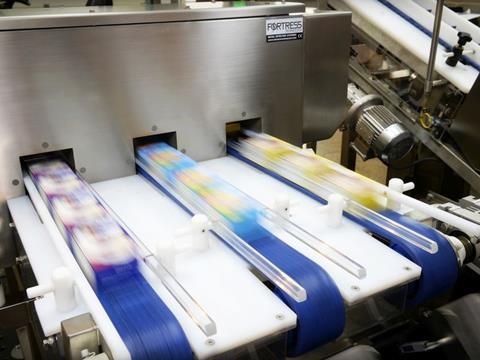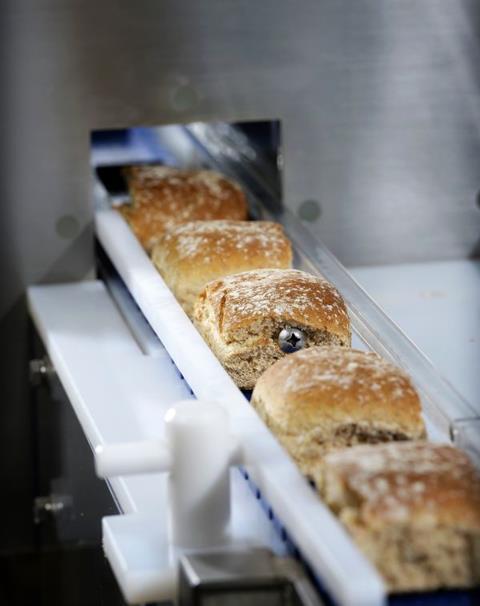
Consumer perceptions and a high profile product recall can make or break a food brand. The damage, if left unchecked, can come back and haunt a company for years to come.
Phil Brown, Managing Director at Fortress Technology outlines why paying attention to metal contaminant risks continues to be the mainstay of a robust brand protection programme and why it doesn’t pay to take a maverick approach to product inspections.
“Consumers today are more aware than ever about where their food has come from and how it’s being handled right across the supply chain,” emphasises Phil. “As a result of new legislation, domestic and foreign food exporters are under greater pressure to adhere to increasingly stringent levels of compliance and third party audits, whilst also having to contend with an ever-changing inspection market.”
Counting the cost of a recallAny contamination is a food safety issue that can have an incendiary effect on a food company’s reputation. With today’s social media culture and 24-hour news reporting, a single contamination incident can make national headlines almost instantly. The reputational and financial consequences can be devastating.

Research conducted by the Association for Packaging and Processing Technologies in their 2016 Brand Protection and Product Traceability market research report puts the average cost of a recall for a food company at $10 milion or more in direct costs, business interruption, brand damage and lost sales.
Calculating the true cost of a food recall is challenging, as no incident is the same as the next, notes Phil. “Manufacturers need to consider the scale of the recall, how many customers their potentially contaminated product has reached, the stage in which the item is recalled, any fines or penalties incurred, and the drain on resources and business interruption at the production plant,” he comments.
Of all the potential contaminants, metal is still the most likely risk in a food processing and packing plant. In the raw ingredient phase, food is exposed to different processes - from cutting meat, filleting fish, grinding spice or mixing dry and wet baking ingredients. Later down the line, you may be packing and cutting larger quantities into more convenient single service portions, creating ready meals using multiple ingredients or preparing ready-cut vegetables - again introducing a possible metal contaminant into the food supply chain.
Choose your checkpoint carefullySupply chain transparency and the speed in which you can publicly pinpoint the source of a metal contaminant are imperative and can minimise the damage to brand reputation.
HACCP guidance states that critical control points (CCPs) should be located at any step where hazards can be prevented, eliminated, or reduced to acceptable levels.
Food manufacturers will typically take a cautious approach, inserting more than one metal detector between the beginning and end of the production and packing process. These checkpoints should correspond to the identified CCPs, depending on the predominant risks.
When assessing the risks, cost of the product at each checkpoint needs to be factored in. If, for example, you pushed your inspection solely the end of the line, any contamination will be caught at the most expensive part of the production process. “Catching a metal contaminant in the raw ingredient stage may cost several hundred pounds as opposed to tens of thousands if you have to recall or waste an entire batch of processed and packaged product,” explains Phil
Meeting evolving track and trace standardsChanges to food safety are being driven by US legislation, and the continuing globalisation of the food chain means harmonisation of food safety standards will be inevitable. From January 2017, food companies have been subject to more frequent audits, with both Safe Quality Food (SQF) and the Food & Drug Administration (FDA) completing annual audits to the FDA’s Food Safety Modernization Act (FSMA) standards. Food safety guidelines issued by the British Retail Consortium (BRC) and the Global Food Safety Initiative (GFSI) are also largely converging towards FSMA.
The compliance deadline dates vary and are staggered based upon the size of a food business. The rules also impact animal feed and for the first time the growing, harvesting, packaging and storage of produce by US and foreign farms. Notably, the new FSMA law impacts the longstanding Hazard Analysis and Critical Control Point (HACCP) principles, which have been superseded by Hazard Analysis and Risk-Based Preventive Controls (HARPC). “The biggest difference in the HARPC standards is that they extend beyond Critical Control Points. Now, food processors are mandated to document all potential product risks, including naturally occurring hazards and anything that might intentionally or unintentionally get introduced to their facility,” notes Phil. “It also means greater transparency across the entire supply chain.”
Again, FSMA legislation is driving the adoption of track-and-trace technologies in the food and beverage sectors. Phil explains: “To facilitate this traceability, a Fortress metal detector system offers secure, automatic logging of information to show that the metal detector is operational and working correctly. This all helps to narrow the time frame during which a problem can go undetected and reducing the amount of suspect products that must be discarded or recalled in case of an incident.”
When choosing your inspection technology, in some applications it’s obvious which system to opt for, since only one of them can reliably detect the contaminants that pose the risk you’re trying to mitigate. Yet, recent advances in metal detection technology mean that systems are now even more sensitive to metal contaminants, as well as being more user friendly, another requisite of the FSMA guidance. Summing up, Phil cautions against short-term thrift when measuring food safety risks and protecting brand equity. “It’s important when investing in inspection equipment to look beyond the upfront costs and consider the Overall Equipment Effectiveness and Total Cost of Ownership and factor in the feasibility of upgrading legacy systems. Always try to base your inspection machine decision on the most prevalent food safety risks, and be sure that any technical advantage will actually add value.”
More info:

















